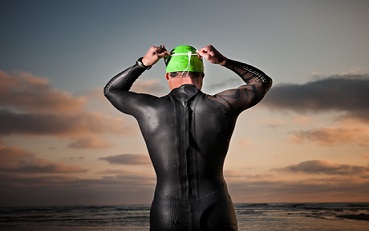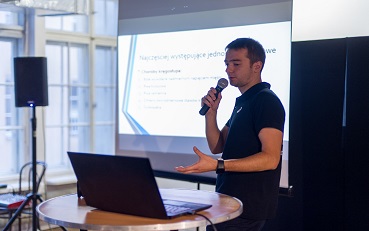Triathlonist training – central stabilisation
Sport is healthy! Ubiquitous fashion for exercising is a very positive social phenomenon.
Everybody knows someone who runs, swims, cycles, with higher or lower intensity. More and more people teams up those three disciplines into one - triathlon. More and more amateur sport teams is being created. You can train alone, work with a trainer or take part in the group trainings. Every person has an individual approach when it comes to triathlon. The number of hours you have to spend for training - doesn't matter if it is an individual training or under the supervision of a trainer is large - from a few to a dozen or so a week - when it comes to the amateur sport of course.
With some many training hours contusions aren't rare. Runner's knee, jumper's knee, shin splits, pain in plantar fascia, tearing and overloading of the muscles, contortions of the joints, pain in the toes - those are recurring problems among people training triathlon.
There is many factors causing those medical conditions - increasing the load too quickly, inappropriate training equipment, lack of the proper warm up, no stretching, and no time for regeneration of the body .
One of the main causes is the preparation of a competitor for the intensive , specialized sports training.
Not everyone of us has been interested in sports since childhood. Not everyone has been participating in regular physical activity since young age. It is known, that to know how to run you first have to learn how to walk. To learn how to walk - you have to learn how to stand. We can assume that everyone can run, but the problem isn't the activity itself but its quality.
Quality is the key to success!
It is easier to understand while studying the Pyramid of the Optimal movement preparation.(G.Cook 2012)

As the pyramid says, as it is with sport - before you may lay your body on a lemond ( technical and tactical skill) while riding, you must prepare your body so it will be able to survive long hours in the position requiring the specific ranges in the joints (basic mobility).
Before we run 42 kilometers during covering the ironman distance (directed mobility) we must strengthen the gluteal muscles (basic mobility) so you don't overload your knee or spinal joints halfway to the finish.
A conclusion is simple - you have to return to the basics. Without a good foundation, problems will appear sooner or later in the form of pain or contusion.
Therefore, in this and future posts, we will try to explain to you the exercises which will help you to enforce the foundation to succeed in sport.
Let's begin with central stabilization:
Training of a triathlonist is full of sacrifices. What you are supposed to do when you don't have time for the supplement training ? Just find some time 🙂
It may be just 30 minutes a week - start and you will see a difference in quality of your triathlon training. You will avoid the situation when you work to participate in a competition whole year and just before the season a contusion occurs.
If you have second thoughts about choosing the strengthening exercises or you want to find out how to do this properly and effectively - we want to invite you for a consultation at CORE and MORE.













